tl;dr
- Customer feedback analysis involves systematically identifying patterns in actionable insights to ideally decrease user friction, improve digital cx, and customer engagement metrics.
- For an effective customer feedback strategy identify your goals and customer feedback channels first.
- Evaluate potential customer feedback tools against your specific needs, considering features, integration capabilities, user-friendliness, scalability, and security, while aligning with budget constraints.
- By effectively analyzing customer feedback, businesses can enhance product experience, improve customer service, boost customer retention and loyalty to foster overall business growth.
In 2025, leveraging the right customer feedback analysis tools has become a non-negotiable aspect of informed decision-making. These tools not only collect feedback but also provide actionable insights that can drive product innovation, improve customer experience, and boost customer satisfaction.
In this article, we will explore the five best customer feedback tools that are making waves in the market, helping businesses stay ahead of the curve by effectively analyzing customer feedback.

What is Customer Feedback?
Customer feedback is the cornerstone of customer satisfaction, offering actionable insights into the customer experience and reasons behind user behavior.
Both positive and negative reviews can be sourced as valuable insights that customers provide about their experience with a company's products or services. Gathering customer feedback is crucial for businesses aiming to improve customer retention and customer loyalty
Businesses often turn to a customer feedback tool to collect customer feedback effectively.
These tools streamline the process of gathering and analyzing customer feedback through unlimited surveys, feedback forms, social media monitoring, and direct communication channels.
They enable companies to reach out to customers at various touchpoints, ensuring a comprehensive understanding of customer satisfaction across the entire customer journey.
Implementing a customer feedback tool allows businesses to identify areas for improvement, track changes in customer loyalty over time, and make data-driven decisions.
By actively listening to customer feedback, companies can adapt and evolve to meet the ever-changing needs and expectations of their clients, ultimately fostering stronger relationships and driving business success.
The Importance of Customer Feedback Analysis Tools
Customer feedback analysis tools are designed to sift through this valuable data to uncover patterns, preferences, and pain points. These tools can translate raw customer feedback into strategic knowledge by employing algorithms and data processing techniques.
In 2024, the integration of artificial intelligence with these tools has revolutionized the way customer data is processed and utilized, offering to extract even more relevant information from valuable insights.
Benefits of Employing Customer Feedback Analysis Tools
Let's take a look at the real impact of introducting feedback analytics to your workflow.
Enhanced Customer Understanding
AI-driven customer feedback analysis tools can process vast amounts of data from various sources in real-time. This means businesses can gain a multidimensional view of customer sentiment, preferences, and behaviors.
With machine learning algorithms, these tools can identify patterns and trends that humans might overlook, leading to a deeper understanding of what drives customer satisfaction and loyalty.
This knowledge allows businesses to tailor their offerings to meet the exact needs and desires of their customers, fostering a more personalized experience.
Proactive Issue Resolution
By leveraging the predictive capabilities of AI, customer feedback analysis tools can alert businesses to potential issues before they escalate. Sentiment analysis can detect shifts in customer mood or satisfaction levels, enabling companies to address concerns promptly.
This proactive approach to issue resolution not only helps to maintain high levels of customer satisfaction but also reduces the risk of negative public reviews and the associated impact on brand reputation.
Data-Driven Decision Making
With AI-enhanced analysis, businesses are equipped to make decisions based on quantitative data rather than intuition.
This removes much of the guesswork from strategic planning and product development. Customer feedback analysis tools can highlight specific areas for improvement or innovation, guiding businesses towards decisions that are aligned with actual customer feedback and market demand.
Operational Efficiency
AI-powered customer feedback analysis tools automate the labor-intensive task of sifting through customer feedback, which can significantly reduce the time and resources spent on feedback analytics.
This efficiency gain not only cuts costs but also allows employees to focus on more strategic tasks that contribute to business growth.
Additionally, real-time analysis ensures that businesses can quickly adapt to changing customer expectations, maintaining a dynamic and responsive operational model.
Businesses harnessing these tools' power are positioned to create more meaningful connections with their customers, innovate confidently, and maintain a competitive edge in an increasingly data-driven marketplace.
What To Look for in Customer Feedback Analysis Tools
When evaluating customer feedback analysis tools, there are several key features to consider:
- Data Collection Versatility: The tool should support various customer feedback channels such as surveys, social media, review platforms, and customer support interactions. This ensures a comprehensive understanding of customer sentiment across different touchpoints.
- Real-Time Customer Feedback: The ability to monitor customer feedback in real-time allows businesses to respond swiftly to customer concerns and capitalize on positive customer feedback.
- Integration Capabilities: The best tools can seamlessly integrate with CRM systems, help desks, and other business software to centralize data and workflows.
- User-Friendly Interface: A tool with an intuitive dashboard that presents data in an easily digestible format is crucial for quick understanding and action.
- Scalability: As your business grows, your customer feedback analysis tool should be able to handle increased volume and complexity of data.
- Compliance and Security: Ensure that the tool complies with data protection regulations and offers robust security measures to safeguard customer information.
How to Choose Customer Feedback Analysis Tools?
Selecting the best customer feedback analysis tool requires a strategic approach. Here are steps to guide you through the process:
- Identify Your Goals: Determine your goal with the customer feedback analysis tool. Whether it's improving product features, enhancing customer service experience, or increasing customer retention, your goals will direct the features you need.
- Assess Your Customer Feedback Channels: Understand where your customer feedback comes from and ensure the tool you choose can aggregate data from all these channels.
- Evaluate Tool Features Against Needs: Match the tool's features with your business needs. Prioritize tools that offer the feedback analytics capabilities and integrations that are most relevant to your goals.
Best Customer Feedback Analysis Tools to try in 2024
Dive into reviews and find the perfect tool to transform your business's approach to customer feedback, driving growth and customer satisfaction like never before.
Survicate stands out as a customer feedback tool, particularly with its AI-powered features to analyze and collect feedback.
This tool employs AI algorithms to dissect open-ended survey questions, extract actionable insights, and identify prevalent themes and sentiment analysis.
With Survicate AI Topics, you can see the most common CX trends and requests without hours of reading through all text responses.
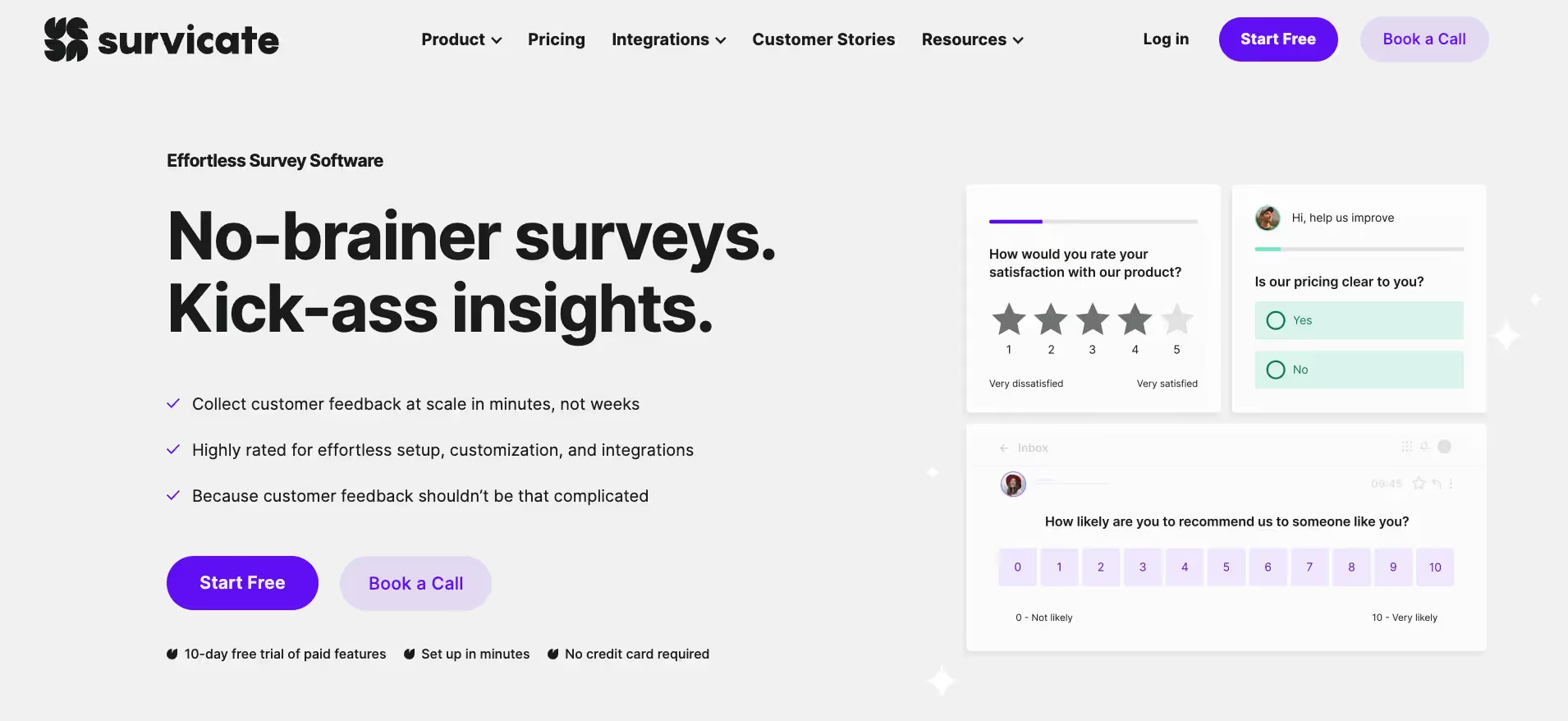
Another benefit of Survicate is real-time customer feedback you can collect across different touchpoints.
With Survicate, you can collect email, link, mobile app and in-product surveys or connect customer feedback from different sources (such as websites, review sites or your communication platform) and store all insights in Feedback Hub.
Each survey has advanced results filtering options that enable you to find crucial and actionable customer feedback even faster. This granular approach to data segmentation means that you can easily track trends in customer satisfaction over time or zero in on specific customer segments for targeted analysis.
Moreover, Survicate can be connected with over 30 tools, such as product management platforms, CRMs, marketing automation and many more.
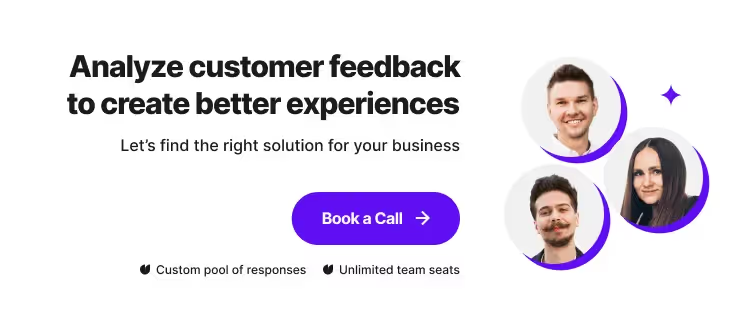
- SentiSum
SentiSum offers text and feedback analytics of customer feedback from CSAT survey results. This is especially useful for support teams seeking to better understand customer satisfaction metrics. Seeing the full context lets you improve the main reason behind poor customer satisfaction.
The advanced features and in-depth analysis provided by SentiSum might be overwhelming for beginners or small businesses that require a simpler solution. This is especially important for companies looking to train multiple team members, as the learning curve may delay customer feedback effectiveness.
SentiSum does not offer a free self-service trial, and its cheapest plan starts from $3.000 per month. This might be a bigger investment, especially for small and medium companies.
If you do have that kind of budget available, you should consider whether you need all the features offered by this tool. Otherwise, maybe you should consider something cheaper, and save time and budget.
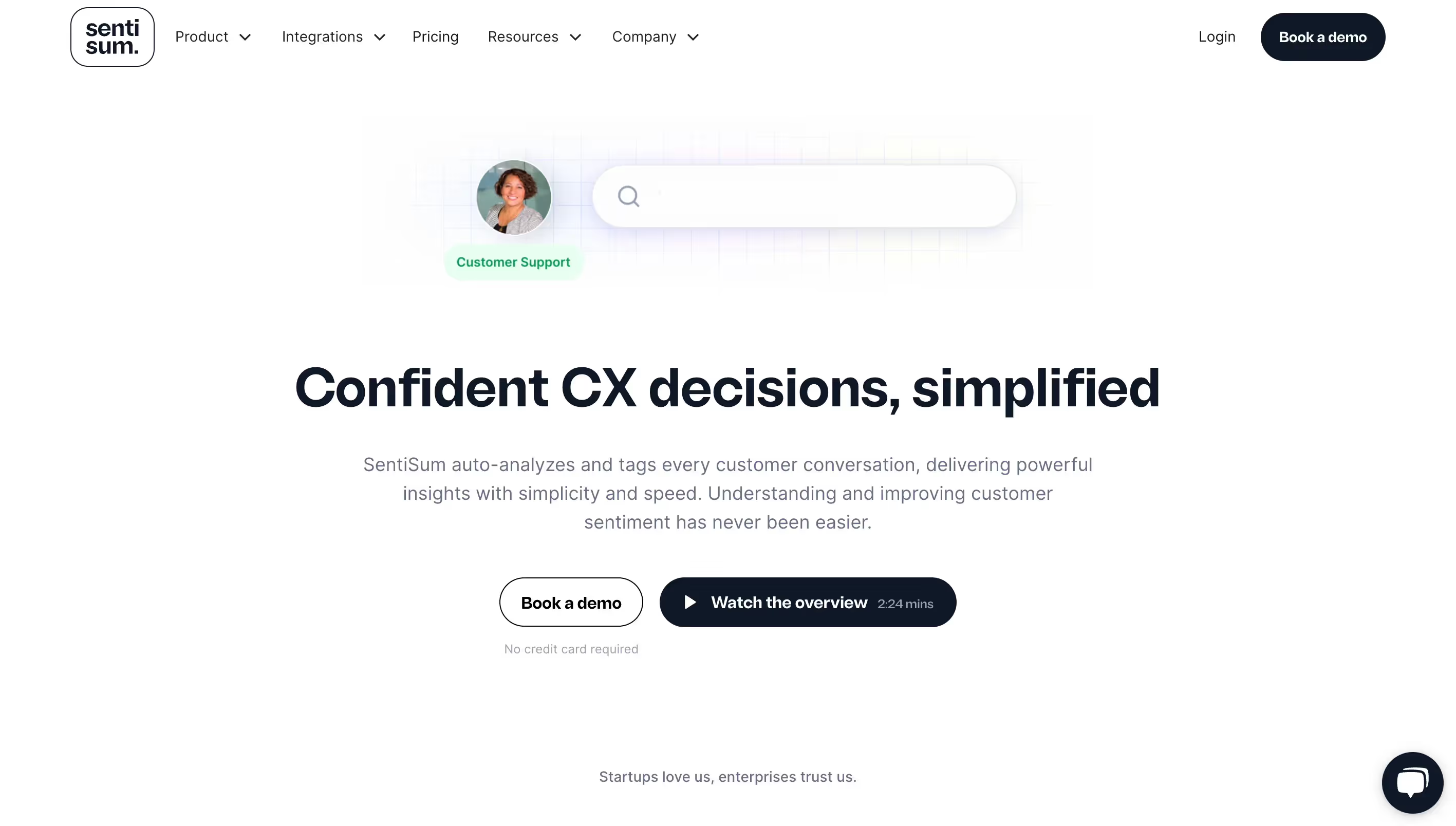
- Qualtrics
Qualtrics is a customer experience platform offering features for customer feedback analysis.
This customer feedback tool supports a wide range of data collection methods, including surveys, social listening, and in-app feedback. Qualtrics’ predictive intelligence and statistical analysis tools enable businesses to understand customer sentiment and behavior.
Their AI features, known as iQ, dig into customer feedback, predicting trends and automating insights with AI. This can be helpful in pinpointing areas for improvement and recurring trends.
However, Qualtrics’ extensive feature set and advanced capabilities can present a steep learning curve for new users. It's a tool designed with research professionals in mind, which means that smaller businesses or those without a dedicated research team may find it overwhelming.
The platform’s complexity may necessitate additional training or support, potentially slowing down the initial adoption phase.
Furthermore, while Qualtrics offers a powerful solution for customer feedback analysis, it is often priced at a premium. This can be a significant consideration for smaller businesses or those with limited budgets, as the investment in Qualtrics needs to be justified by a high utilization of its advanced features.
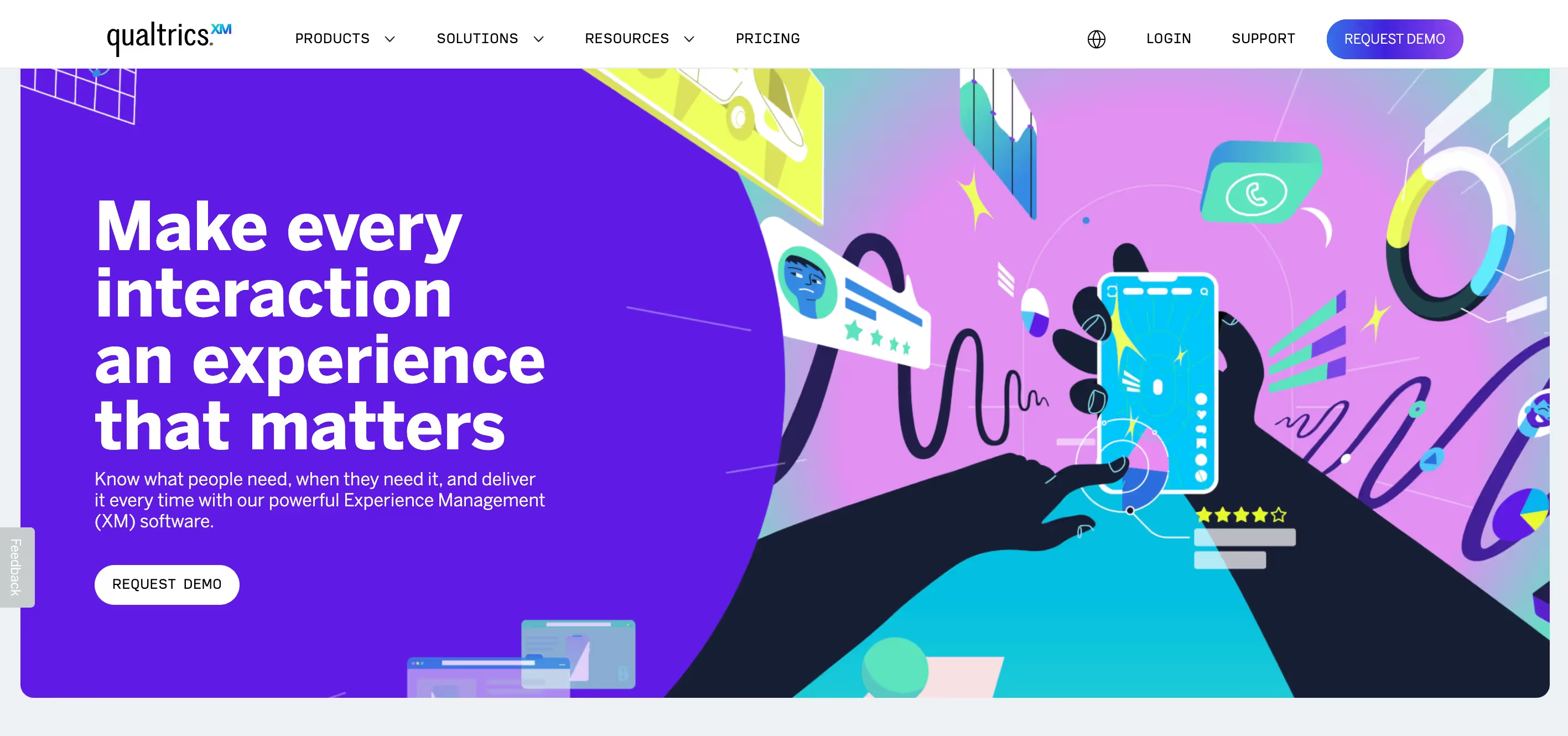
4. Medallia
Medallia provides a platform to analyze customer feedback across multiple touchpoints. The tool's analytics engine can identify trends and patterns, enabling companies to make informed decisions.
The platform helps collect feedback data on customer sentiment and enables you to act on customer feedback through its suite of customer engagement tools.
These tools allow companies to follow up with respondents, close the loop on customer feedback, and implement changes that directly address the concerns and suggestions of their customer base.
However, similar to Qualtrics, Medallia's comprehensive offerings come with complexity and a high price tag that might not be suitable for all businesses. The platform's wide array of features and deep analytical capabilities may be more than what small to medium-sized businesses require or have the capacity to manage effectively.
This can lead to underutilizing the platform's potential, making it a less cost-effective solution for smaller operations.
Furthermore, the depth of data analysis and the sophistication of the engagement tools might necessitate a dedicated team to manage and interpret the insights.
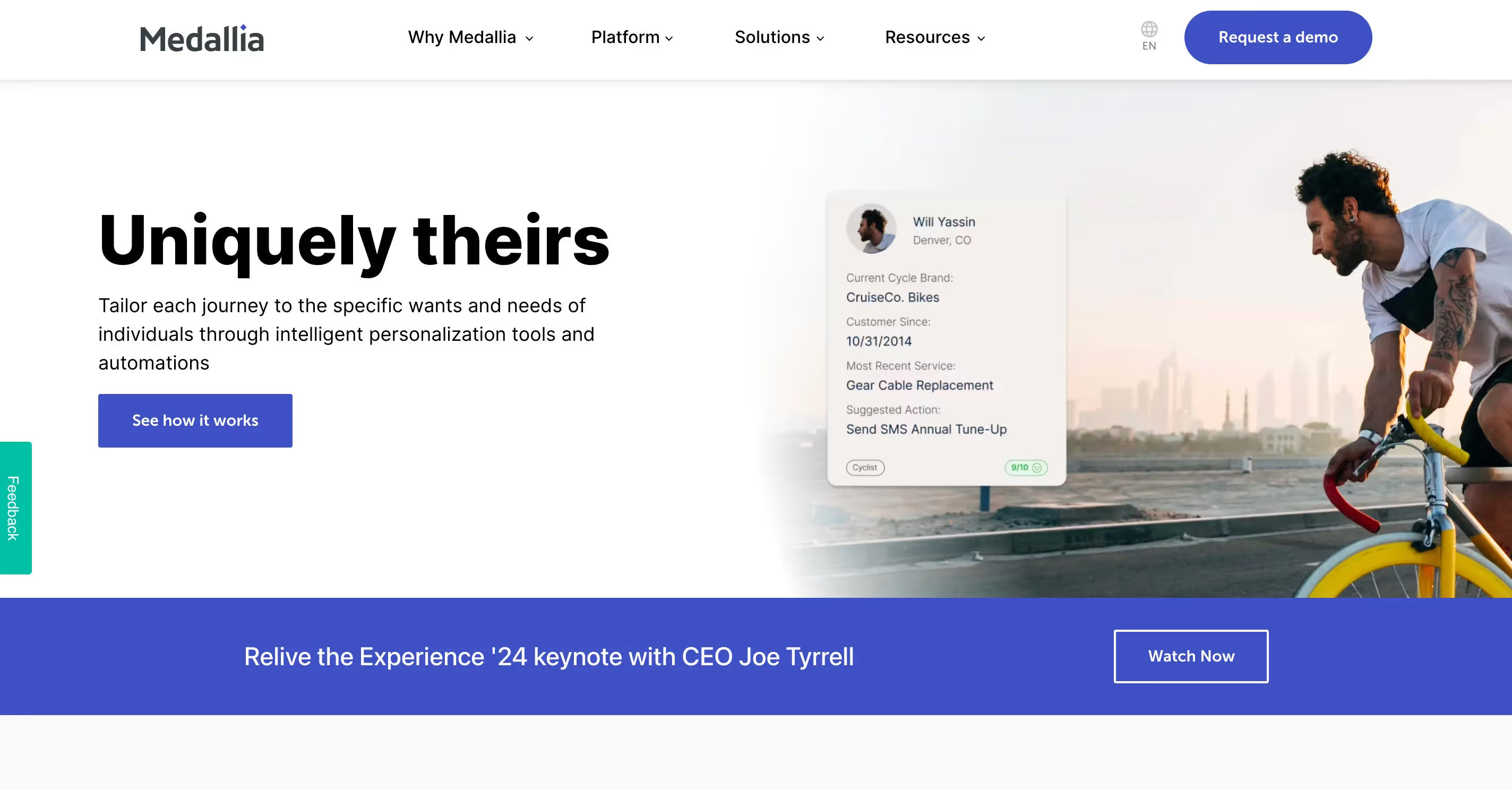
- SurveyMonkey
SurveyMonkey is a customer feedback tool, offering a platform for gathering user feedback. It allows for the creation of customized surveys tailored to specific business needs.
This survey tool also offers some features that enable you to analyze customer feedback more easily.
Text analysis will enable you to categorize customer feedback and drill down to the primary points that come up in survey results so you can better understand customer feedback. This might be a good choice if you're looking for a tool with SPSS integration and cross-tabulation.
However, some users are complaining about SurveyMonkey UI and its survey design capabilities. Remember that the survey design can significantly impact the survey response rate, so make sure available options match your brand guidelines.
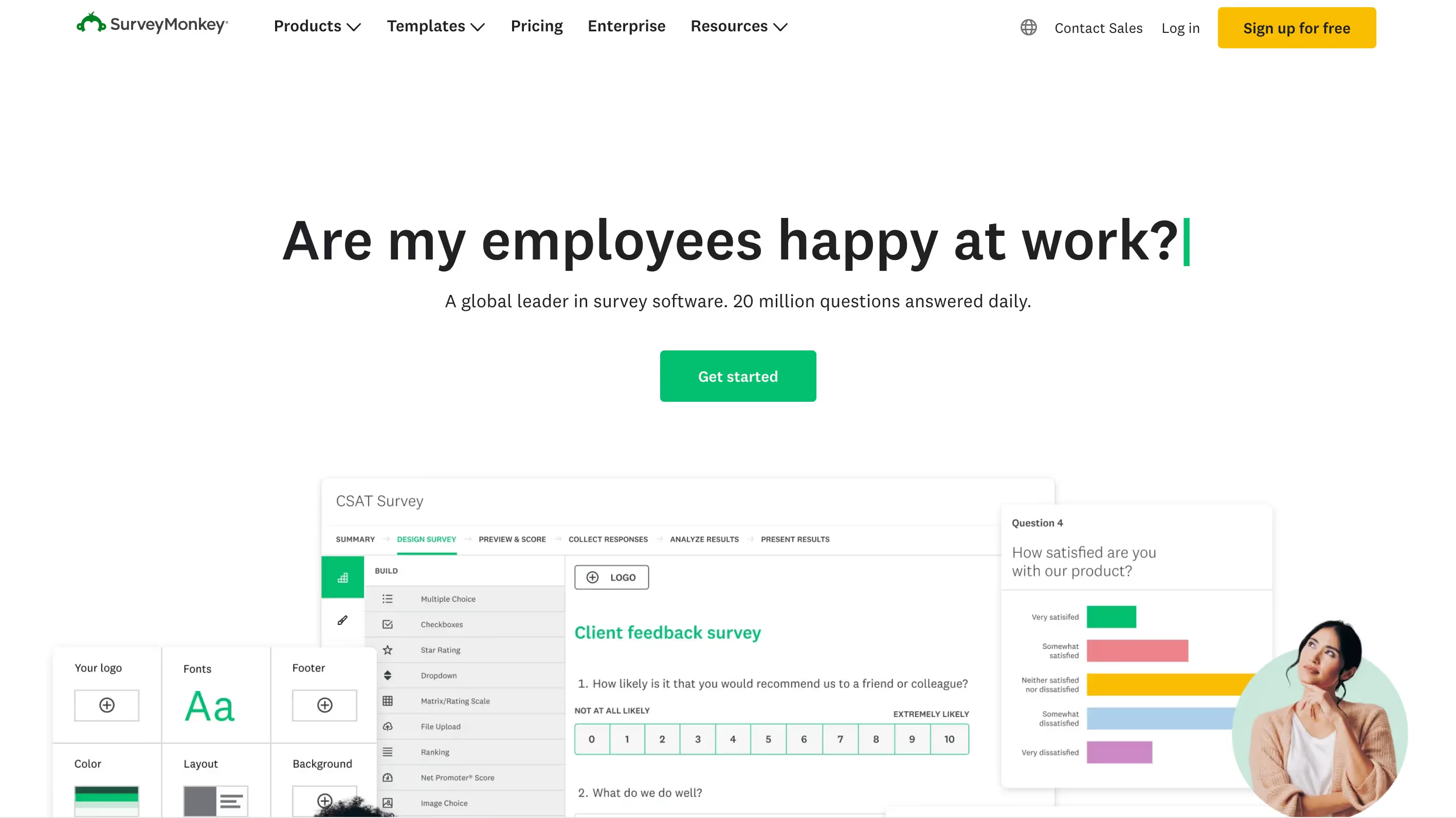
Wrapping up
In conclusion, customer feedback analytics is no longer just an option but a necessity for businesses aiming for growth and customer satisfaction in 2024. The right tool can transform vast and varied customer feedback into actionable insights, driving product innovation, enhancing customer experiences, and ultimately, leading to higher customer satisfaction rates.
From AI-powered analysis to real-time insights and seamless integrations, the tools discussed—Survicate, SentiSum, Qualtrics, Medallia, and SurveyMonkey—each have their unique strengths and cater to different business needs. Whether your focus is on deep analytical capabilities, ease of use, scalability, or cost-efficiency, there is a tool out there that fits your company's requirements.
Interested in collecting and analyzing customer feedback without effort? Try out Survicate, an effortless customer feedback management platform where you can collect feedback across channels and categorize all actionable insights.








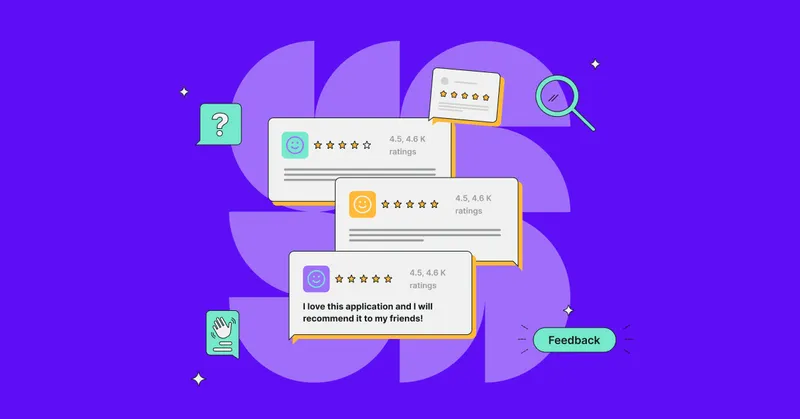
.webp)
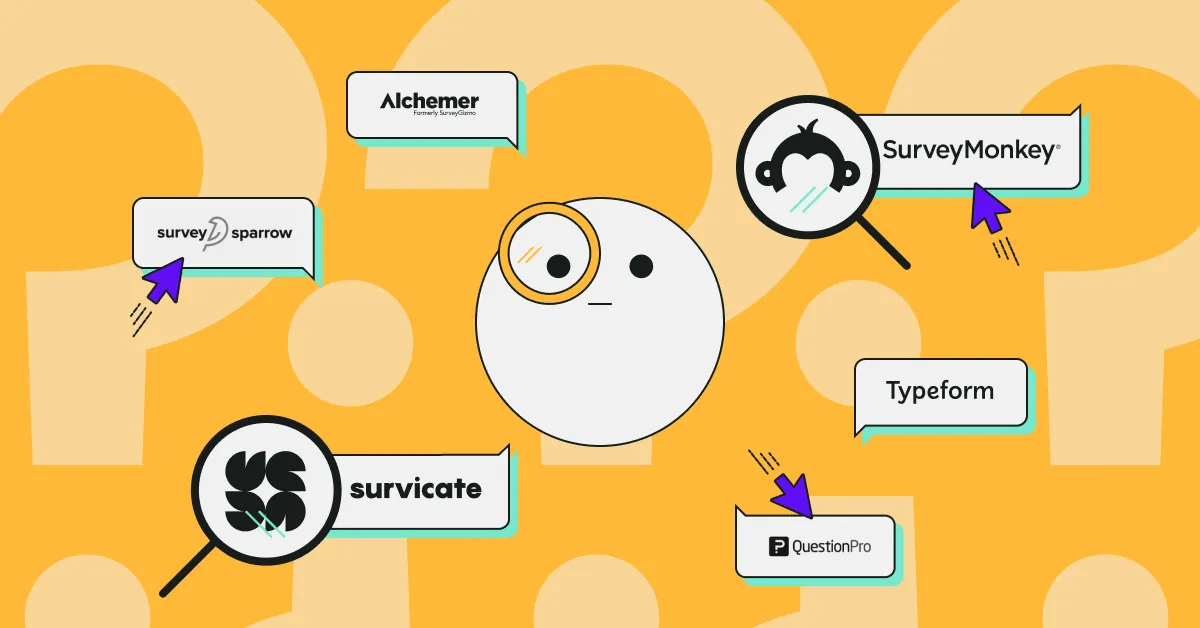
.png)

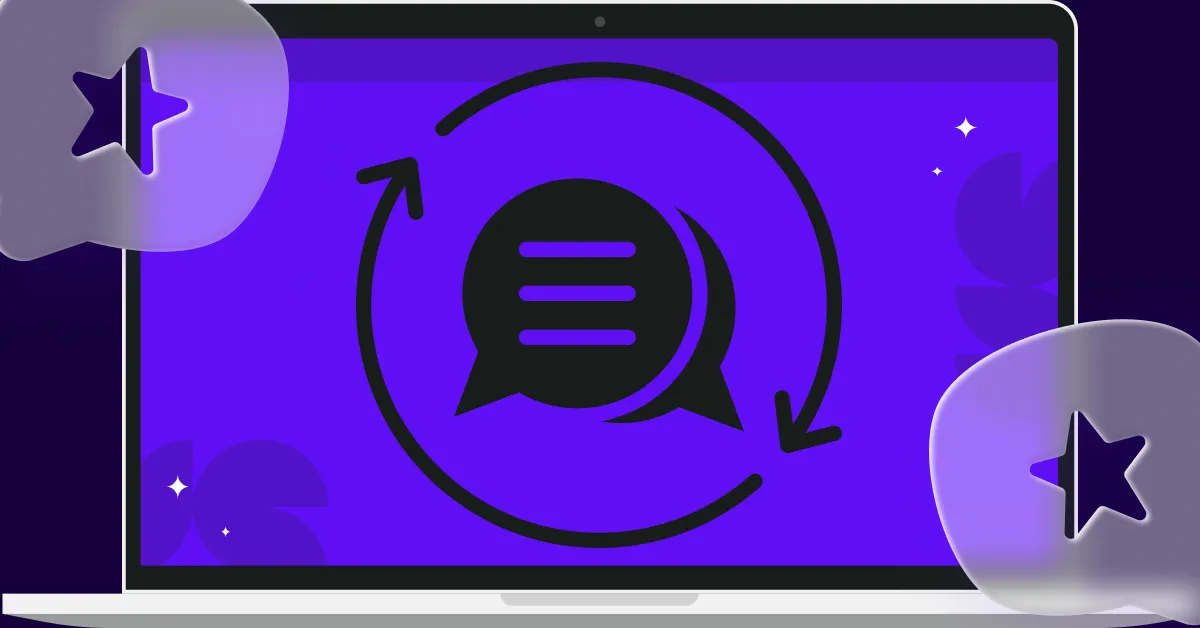

.svg)

.svg)



